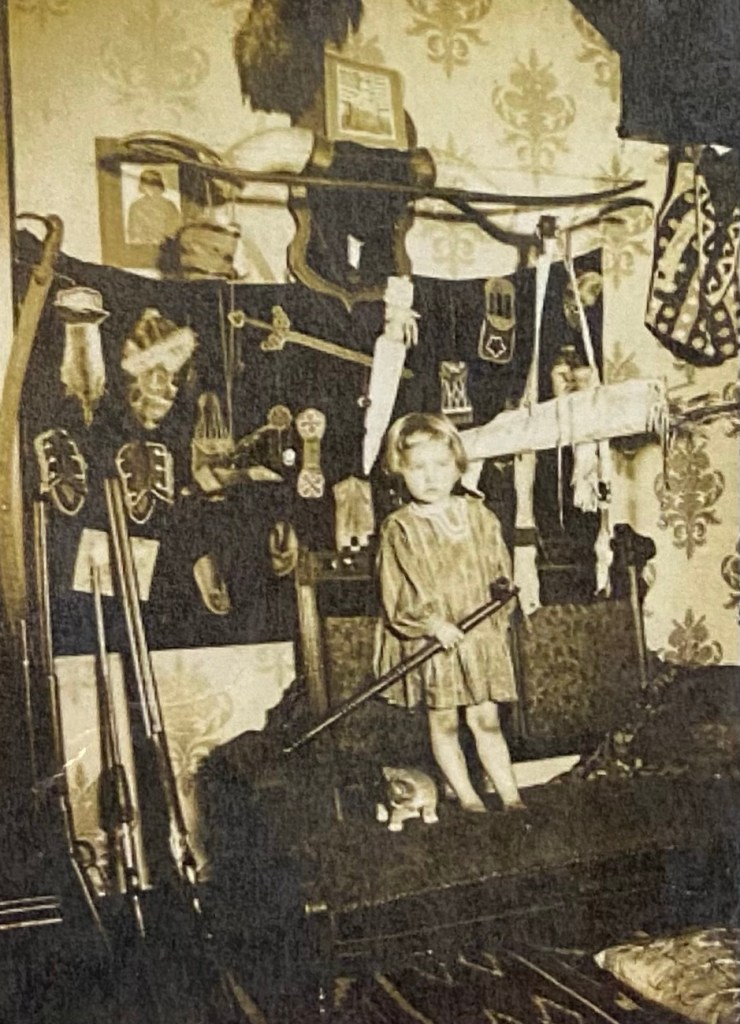James Richard Mead was a prominent civic leader in Wichita, Kansas. Mead was born on May 3, 1836, in New Haven, Vermont

Courtesy: wichitaphotos.org
He married his first wife, Agnes on December 1, 1861. Agnes Barcome was born in Montreal, Canada and they married in Burlingame, Kansas. Together they had four children.
In 1868 Mead was elected to the State Senate from the district covering Morris, Chase, Marion, and Butler Counties, and all the unorganized territory west of the Estate line. For two years he served as the Chairman of the Committee of Ways and Means.

Courtesy: specialcollections.wichita.edu
On the 19th of April 1869, Agnes died during childbirth. After that, Mead sold his trading post and moved to Wichita in 1870. He quickly became involved in the community and was known for his philanthropic work and civic leadership.
In 1871, he organized a company to construct the Wichita & Southwestern Railroad, the first line to give Wichita railway connections, and within six months had it in operation.

Courtesy: wichitaphotos.org
Along with N. A. English, William “Dutch Bill” Greiffenstein, and William Mathewson. These four men picked the name for the new settlement near the junction of the Big and Little Arkansas Rivers. Beecher and Hamilton were suggested, but Mead and Greiffenstein wanted to name it after the tribe affiliated with the land and use the Indian word “Wichita.”
Mead married again in January 1873, this time to Lucy Inman, his housekeeper, and William Mathewson’s sister-in-law.

Courtesy: KS Encyclopedia of state history
Mead built one of the first brick houses in Wichita, a gift for his new bride. The home faced Topeka; Mead loved the spot because it was surrounded by trees. He was a big proponent of trees and offered free trees to anyone if they would plant and take care of them.

Courtesy: wichitaphotos.org
The offer paid off as a May 1873 Eagle article notes that “hundreds, yes, thousands of trees have been transplanted in Wichita this spring, especially on both sides of Emporia, Lawrence and Topeka avenues, in Mead’s addition.”



The Meads lived in their fine stone home for 20 years until they sold it in 1893. The land was bought by Bishop John J. Hennessey. The land became the home of the new Cathedral. The house survived for another 13 years before being torn down to make room for the Cathedral’s rectory.




His third and final marriage occurred in 1896 to Fern Hoover and they had two children together.
In his later years Mead became involved in the Academy of Sciences and Kansas State Historical Society, where he served in leadership positions for both organizations. Mead was a founding member of the Washington Chapter of the Sons of the American Revolution which still meets in Wichita. He also served as vice president of the Mead Cycle Company of Chicago, which he and his son, James L. Mead, had organized in 1895.

Courtesy The Wichita Beacon 1910
James R. Mead died on March 31, 1910, after contracting a cold that turned to pneumonia. He was 74.
On April 2, 1910, The Wichita Eagle wrote, “The (Mead) mausoleum will be of granite, marble, and slate, and of architectural and artistic beauty, the finest to be devised. This will be the most imposing mausoleum in the West.” Two of the stones were from the Barre Vermont granite quarry.







Mead’s third wife, Fern died in 1959. None of the wives are buried in the mausoleum. The best I can tell; Mead and his son, James L. Mead. James L.’s Cora, and their children; Enoch and his wife Madge, Myron, Agnes Mead Molnar and Theodore.
Special thanks to Hal, Jim, and the Maple Grove crew for allowing me the opportunity to photograph inside this most historic family mausoleum.
The Mead Building still stands today at 412-414 E. Douglas Avenue.


To learn about the school bearing this pioneer’s name, check out Mead Middle School. An inaccessible city park also pays tribute to Mr. Mead.
Check out more of Wichita’s unique stories, art, and history.

You must be logged in to post a comment.